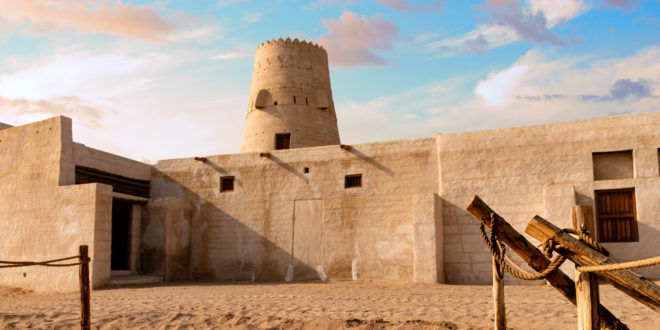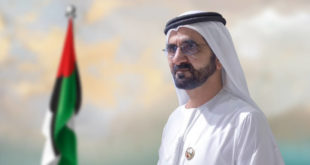Tourist destinations attract visitors during the most beautiful winter campaign in the world.
– The geological, archaeological and historical importance of Jebel Hafeet, the Hili civilization, Bida Bint Saud, the oases areas and the Aflaj system reinforced the accession of the city of Al Ain to the UNESCO list in 2011.
Al Ain Oasis.. a major destination for visitors with more than 147,000 palm trees, and vast areas where nearly 100 species of plants grow, in addition to a number of productive farms.
– Hili archaeological site… the largest archaeological site of the Bronze Age in the country, dating back to the beginning of the third millennium BC.
12 Emirati sites have passed the special requirements of the preliminary list of UNESCO World Heritage Sites.
The UAE devotes its efforts to sustaining and preserving cultural heritage and consolidating it as an effective tool in economic development.
………………………….
Dubai, January 17 / The inclusion of UAE sites on the World Heritage List of the United Nations Educational, Scientific and Cultural Organization (UNESCO), and on its preliminary list, reflects the cultural and cultural value of archaeological and natural sites in the UAE, and enhances efforts to activate cultural tourism in the country.
The state is aware of the importance of preserving and documenting cultural, natural and archaeological sites, as one of the main components of the local heritage, which prompted it to work closely to register the most important of these sites on the UNESCO World Heritage List, which came as a cultural memory that accommodates the interaction and convergence of many human civilizations, and culminated in By including the city of Al Ain and some of its archaeological sites on the list of the International Organization for World Human Heritage, to become the first Emirati site on this list.
The sites included in the list or those included in the preliminary list are considered a destination for visitors from inside the country and tourists from abroad, as the invitation to visit them at these times of the year coincides with the campaign of the most beautiful winter in the world, whose third edition comes under the slogan “Our Heritage”, and seeks to highlight the elements Inheritance, national identity, and the system of inherited authentic Emirati values.
Heritage preservation.
The UAE seeks to highlight the tangible and intangible heritage elements on the international scene and register them on UNESCO lists, which contributes to introducing them, promoting them globally, preserving and restoring them according to international standards of the “UNESCO” organization, as the registration of a site on the list of the international organization enhances the country’s presence on A global cultural tourism map, which supports the sustainability and preservation of cultural heritage and makes it an effective tool in economic development.
World Heritage Sites are landmarks nominated by the UNESCO World Heritage Committee to be included in the International Heritage Sites Program. These landmarks may be natural, such as reserves, cemeteries, mountain ranges, and forests, and may be man-made, such as buildings, castles, forts, and cities.
The International Convention for the Protection of Cultural and Natural Heritage signed in 1972 defines “natural heritage” as natural features consisting of physical or biological formations and precisely defined areas that constitute habitats for threatened animal and plant species.
Geological importance.
2011 witnessed the entry of the first Emirati sites on the UNESCO list, as the decision to enter the city of Al Ain was taken during the 35th meeting of the World Heritage Committee of “UNESCO”, which was held at the organization’s headquarters in Paris.
The United Nations Educational, Scientific and Cultural Organization “UNESCO” included the city in this important list, and the organization relied on the geological, archaeological and historical importance of Jebel Hafeet, which is located on the outskirts of the city and supervises it, as well as the Hili civilization that was flourishing in Al Ain, as well as the facilities of historical importance such as “Bida Bint Saud” and the oases areas and the aflaj system that was used to manage and conserve water.
Al Ain Oasis.
Al Ain Oasis, which was included in the UNESCO World Heritage List, is a destination for visitors from the local community and tourists alike, who enjoy exploring the educational environmental center and wandering among a wide range of shaded paths among more than 147 thousand palm trees, and vast areas that grow about 100 species of plants. In addition to a number of productive farms.
The environmental center offers a unique experience that transports visitors from the present to the past, through interactive screens and educational activities.
The Miniature Oasis reviews the stages of the establishment of Al Ain Oasis and the factors that contributed to its emergence. The traditional irrigation methods known as falaj highlight the importance of the oasis site and the most important forts surrounding it, which played an effective role in protecting and defending the oasis from external threats.
Hili archaeological site.
The largest archaeological site of the Bronze Age in the Emirates is located in the Hili area in Al Ain, and it dates back to the beginning of the third millennium BC and continued until the beginning of the second millennium without interruption.
Some parts of this site have been annexed to the Hili Archaeological Park, which is designed to highlight historical monuments and make them available to visitors. The large Hili tomb is one of the largest mass burials in the archaeological site of Hili, built in circular shapes of carved stone, with a diameter of 12 meters, and it seems that it was 4 meters above the ground.
The tomb contains 4 internal rooms, each of which is dedicated to burying a specific number of dead people.
This tomb is distinguished by two entrances carrying decorations of animal and human forms, most notably the “Al-Wadihi” oryx, which is one of the indigenous animals in the Arabian Peninsula. The two entrances lead to the four rooms that were used to bury the dead next to gifts and personal belongings.
Hafeet civilization.
The Hafeet civilization dates back to the beginning of the Bronze Age in the Emirates, as the excavations conducted by the Danish mission since 1959 showed that man had settled in the Al Ain region since the end of the fourth millennium BC.
This is indicated by the residues
 Media ININ Economy We Trust
Media ININ Economy We Trust








